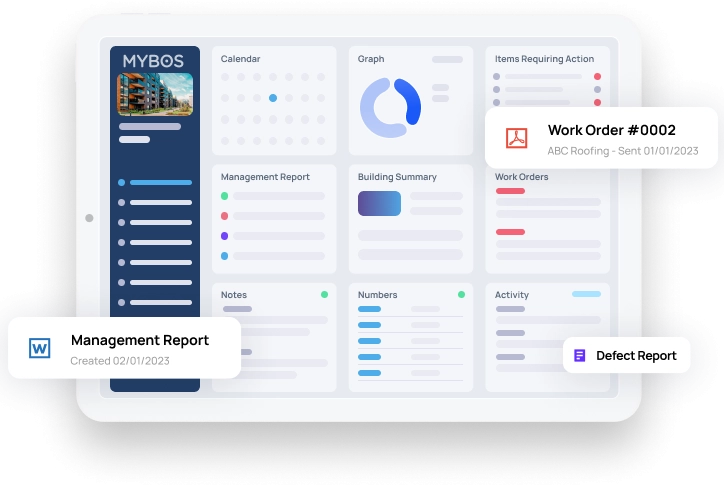
3 Smart Space Optimisation Strategies for Facility Managers
Space has become one of the most valuable and most scrutinised resources in commercial buildings. Rising real estate costs, hybrid working models, and sustainability pressures mean facility managers are under growing pressure to do more with less. That’s why space optimisation strategies are now at the heart of smart facility management.
According to PwC’s Emerging Trends in Real Estate® Asia Pacific 2025, the way organisations approach workplace design is undergoing a fundamental shift. In markets like Australia, resilient work-from-home patterns have permanently reduced traditional office space demand. As a result, many occupiers and facility teams are now rethinking how spaces are configured and utilised, focusing on creating flexible environments that balance collaboration with individual work needs.
For facility managers, this trend highlights the importance of aligning workplace strategies with broader business objectives. It’s no longer enough to simply cut square metres or reduce overheads. Today’s most successful facilities are those that can flexibly adapt to changing tenant expectations while maintaining long-term asset value.
Below, we explore three practical and future-ready strategies for space utilisation in facilities, along with tips to integrate them into your day-to-day operations.
1. Embrace Data-Driven Space Planning
The first step in optimising building space is understanding how it’s actually used. Without accurate insights, facility managers risk underestimating wasted areas or overcommitting to spaces that sit idle.
Smart sensors, occupancy tracking, and integrated management platforms provide real-time data on:
- Peak usage patterns – identifying when and where demand is highest
- Low-traffic zones – highlighting underutilised areas that could be repurposed
- Workplace trends – such as shifts in meeting room use or desk-sharing preferences
This information forms the foundation for space planning for facility managers, allowing leaders to make evidence-based decisions rather than relying on assumptions.
For example, occupancy analytics may reveal that a large conference room is used only once a week, while smaller breakout spaces are consistently overbooked. With this data, managers can restructure layouts to better align with tenant behaviour.
To better understand how reporting metrics drive operational decisions, see our guide on the top facility operations metrics.
2. Leverage Smart Building Solutions for Flexibility
The modern workplace is no longer static. Hybrid schedules, rotating teams, and evolving business needs demand flexibility. Smart building solutions help facilities adapt by integrating technology that enhances both efficiency and occupant experience.
Some effective facility space utilisation techniques include:
- Hot-desking systems – enabling staff to book desks or meeting rooms on demand
- Smart lighting and HVAC – adjusting to occupancy to cut energy waste
- Digital wayfinding tools – improving navigation in large campuses or office towers
- Mobile-based access control – ensuring secure, seamless entry for rotating staff
These solutions don’t just help in improving workspace efficiency, they also support sustainable space optimisation by reducing unnecessary energy use and lowering carbon emissions.
Facility managers adopting these innovations are better prepared for the future of smart facility management, where adaptability is key. For more forward-looking insights, check out our article on trends and innovations shaping facility management in 2025.
3. Redesign for People-Centred Efficiency
At its core, facility layout optimisation is about people. Spaces that are poorly designed can hinder productivity, create safety risks, or discourage collaboration. Effective workspace efficiency comes from balancing operational goals with user experience.
Key people-centred optimisation strategies include:
- Zoning layouts – separating quiet focus areas from collaborative hubs
- Multi-purpose spaces – allowing meeting rooms to double as event areas or training zones
- Wellness integration – adding breakout lounges, natural light, and greenery to support wellbeing
- Safety-focused design – ensuring pathways, exits, and shared spaces meet compliance standards
Designing with people in mind not only improves utilisation but also drives tenant satisfaction and retention. A building that feels intuitive and comfortable will always attract long-term users. For a deeper look at balancing efficiency with occupant safety, explore our article on facility safety best practices.
Why Space Optimisation Matters More Than Ever
Investing in facility management best practices around space isn’t just about cost savings, it’s about resilience. Buildings optimised for efficiency and flexibility are better equipped to adapt to market changes, tenant expectations, and sustainability regulations.
With hybrid work reshaping how offices are used and residential tenants expecting more from shared amenities, underutilised areas can quickly become wasted expenses. By adopting smarter space allocation, managers can reduce overheads, enhance tenant satisfaction, and make their properties more competitive in the market. Optimisation also supports sustainability goals by cutting energy waste and maximising the use of every square metre.
According to McKinsey & Company’s Six emerging trends in facilities management sourcing, workplace strategies such as smarter space utilisation and integrated services not only deliver cost savings but also enhance resilience and sustainability in the built environment.
Planning Ahead: Building Smarter, More Efficient Facilities
As real estate pressures mount and tenant expectations evolve, space optimisation strategies have become a core responsibility for facility managers. By harnessing data-driven facility management, implementing smart building solutions, and designing spaces with people in mind, managers can create efficient, flexible, and future-ready facilities.
The takeaway is clear: optimised spaces aren’t just efficient, they’re more sustainable, more attractive, and more valuable over time.
If you’re ready to see how MYBOS can help you streamline smart facility management and enhance space utilisation in facilities, book a demo today.




